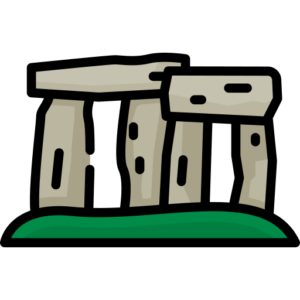Turpan, China
Region: Xinjiang
Geographic Coordinates: 42.951200, 89.189500
Temperature Range: -40.0°C to 45.0°C (-40°F to 113°F)
Climate: Dry and hot climate with low precipitation throughout the year in Turpan, China.
Population: 622903
Language: Uighur
Turpan is a city located in the Xinjiang Uyghur Autonomous Region of northwestern China. It is situated in the Turpan Basin, Which is known for its extreme heat and arid climate. Despite this, Turpan has a rich history and culture that spans over 2, 000 years. One of the most notable features of Turpan is its ancient irrigation system known as karez. This underground water system dates back to around 200 BC and was created to bring water from nearby mountains to the city’s crops and residents.
The karez system consists of a series of wells connected by tunnels that can stretch for miles underground. Another important aspect of Turpan’s history is its role as a key stop on the Silk Road trade route between China and Central Asia. The city was a hub for trade in silk, Spices, And other goods during ancient times. Today, Visitors can see remnants of this trade at sites such as Jiaohe Ancient City, An abandoned Silk Road trading post that dates back to the Han Dynasty. Turpan also has several cultural landmarks worth visiting.
One such site is Emin Minaret, An impressive tower built in 1778 by local ruler Emin Khoja to commemorate his parents’ deaths. The minaret stands over 44 meters tall and features intricate brickwork designs. Another popular attraction in Turpan is Grape Valley, Which offers visitors a chance to taste some of Xinjiang’s famous sweet grapes while enjoying views of surrounding vineyards against a backdrop of red sandstone cliffs.
In addition to these cultural attractions, Turpan also boasts natural wonders like Flaming Mountains National Geopark – named after their red-orange hue – where visitors can explore unique geological formations including sandstone pillars shaped by wind erosion over millions of years. no visit to Turpan would be complete without trying some traditional Uyghur cuisine such as lamb kebabs or pilaf made with local ingredients like raisins and apricots. The city’s diverse population of Uyghurs, Han Chinese, And other ethnic groups has created a unique culinary scene that reflects the region’s rich history and cultural heritage.
Overall, Turpan offers visitors a fascinating glimpse into China’s ancient past as well as its modern-day diversity and natural beauty. With its historic landmarks, Stunning landscapes, And delicious food, It is no wonder that Turpan is becoming an increasingly popular destination for travelers from around the world.


Important Landmarks
- Emin Minaret
- Jiaohe Ruins
- Grape Valley
- Karez Irrigation System Museum
- Astana-Karakhoja Ancient Tombs
- Bezeklik Thousand Buddha Caves
- Turpan Museum
- Flaming Mountains
- Tuyugou Valley
- Sugong Pagoda

Primary Industries
- 1. Agriculture
- Grapes
- Melons
- Cotton
- 2. Tourism
- Historical and cultural significance
- Natural landscapes
- 3. Mining
- Coal
- Oil shale
- 4. Manufacturing
- Textiles
- Machinery
- The Silk Road: Turpan was an important stop along the ancient Silk Road trade route that connected China with Central Asia, the Middle East, and Europe.
- Kingdom of Kroraina: Turpan was once the capital of the Kingdom of Kroraina (also known as Loulan), which existed from 200 BCE to 640 CE.
- Bezeklik Thousand Buddha Caves: These caves are a complex of Buddhist cave temples dating back to between the 5th and 14th centuries. They are located in a canyon near Turpan.
- Emin Minaret: This is a towering Islamic minaret built in 1778 by local ruler Emin Khoja. It is one of the tallest minarets in China.
- Jiaohe Ancient City: This is an abandoned city that dates back more than 2,000 years and was once an important center for trade along the Silk Road.
- Zhang Qian: He was a Chinese diplomat who traveled to Central Asia during the Han dynasty (206 BCE-220 CE) and helped establish diplomatic relations with many neighboring countries along the Silk Road.
- Xuanzang: He was a famous Chinese Buddhist monk who traveled to India in search of Buddhist scriptures during Tang dynasty (618-907 CE). He passed through Turpan on his journey.
- Li Bai: He was a famous Tang dynasty poet who wrote about his travels along the Silk Road, including passing through Turpan on his way westward.
- Emperor Wu Zetian: She was China’s only female emperor who ruled during part of Tang Dynasty (618-907 CE). She sent envoys westward towards Central Asia which included traveling through or around modern-day Xinjiang province where Turfan is located today.
- Ibn Battuta: He was a famous Moroccan traveler who visited Turpan during his journey to China in the 14th century.
- Jiaohe Ancient City is a well-preserved ancient city that dates back to the 2nd century BC and was once an important stop on the Silk Road.
- Karez Irrigation System Museum showcases the unique underground irrigation system that has been used in Turpan for over 2,000 years.
- Emin Minaret is an impressive Islamic tower built in the 18th century, which stands at over 44 meters tall and is decorated with intricate patterns and calligraphy.
- Grape Valley is a scenic valley filled with vineyards, fruit trees, and other crops – a perfect place to enjoy some fresh air and local produce.
- Bezeklik Thousand Buddha Caves are a complex of Buddhist cave temples dating back to the 5th century AD, featuring stunning murals and sculptures carved into the rock walls.
- Turpan Museum is a comprehensive museum showcasing local history, culture, art, and archaeology – a great place to learn about all aspects of life in Turpan throughout the ages.
- Flaming Mountains Scenic Area offers a dramatic landscape of red sandstone cliffs that are said to glow like flames in certain lighting conditions – it’s popular for hiking or taking scenic drives.
- Astana-Karakhoja Ancient Tombs are an archaeological site containing over 500 tombs from various periods of Chinese history – many still contain well-preserved artifacts such as pottery, textiles, and jewelry.
- Sugong Pagoda is an elegant pagoda built during the Qing Dynasty (1644-1911), offering panoramic views of Turpan from its upper floors.
- Tuyugou Village is an ancient Uyghur village located just outside Turpan proper where you can see traditional architecture or sample local food specialties like lamb kebabs or hand-pulled noodles (laghman) or even stay overnight in a traditional guesthouse.
- Turpan is not known for any major sports teams or leagues.
- It is primarily an agricultural and tourist region, with no significant professional sports presence.
- However, there may be local amateur teams or recreational leagues in the area.
- Grape Festival: The city of Turpan is renowned for its grapes, and every August, the Grape Festival is held to celebrate the harvest season.
- Silk Road International Tourism Festival: In September, this festival highlights the cultural diversity of the Silk Road region.
- Uyghur Cultural Arts Festival: This festival honors Uyghur culture through traditional music, dance, food, and crafts.
- Karez Water System Festival: A unique irrigation system that has been in use for thousands of years in Turpan is celebrated during this festival with cultural performances and activities.
- International Fruit Expo: Held in October, this expo showcases the variety of fruits grown in Turpan and attracts visitors from all over China.
- Xinjiang Ethnic Minority Costume Show: Traditional costumes from various ethnic minority groups living in Xinjiang Province are featured during this show including Uyghurs, Kazakhs, Tajiks, and Mongolians.
- Turpan International Film Festival: This film festival aims to promote independent films from around the world while also showcasing local talent.
- Fire Dragon Dance Festival: During Chinese New Year celebrations locals dressed as dragons made of bamboo sticks covered with fireworks perform a traditional dance as they parade through the streets at nightfall.
- Lamb Kebabs: Turpan is known for its delicious lamb kebabs, which are grilled over an open flame and seasoned with cumin, chili powder, and other spices.
- Grape Wine: Turpan is also famous for its grape wine, which has a unique flavor due to the region’s hot climate.
- Samsa: Samsa is a type of baked pastry filled with lamb or beef and vegetables. It’s a popular snack food in Turpan.
- Nang Bread: Nang bread is a type of flatbread that’s baked in a clay oven and served with butter or jam.
- Uyghur Cuisine: Uyghur cuisine is a fusion of Chinese and Middle Eastern flavors, featuring dishes like laghman (noodle soup), polo (rice pilaf), and mantou (steamed buns).
- Xinyuan Restaurant
- Yuetianlou Restaurant
- Tianxiangxing Restaurant
- Yilirestaurant
- Turpanliuqinjiangroujiamo
- Grape Valley Park is a beautiful park that boasts vineyards, fruit trees, and gardens.
- Jiaohe Ancient City is an important historical site that features ruins of an ancient city which served as a major trading center on the Silk Road.
- Karez Irrigation System Museum is an informative museum that showcases the traditional underground irrigation system used in Turpan for centuries.
- Emin Minaret is a magnificent minaret built in the 18th century that offers breathtaking panoramic views of Turpan and its surroundings.
- Flaming Mountains Scenic Area is a natural park renowned for its striking red sandstone cliffs and unique rock formations.
- Bezeklik Thousand Buddha Caves are ancient caves carved into cliffs containing thousands of Buddhist statues and murals dating back to the Tang Dynasty (618-907 AD).
- Tuyugou Valley Scenic Spot is a charming valley with picturesque Uighur villages, orchards, and hiking trails.
- Shanshan Ancient City Ruins Park holds great historical significance as it dates back over 2,000 years ago during Han Dynasty (206 BCE–220 CE).

Noteable History

Museums and Things To See


Sports Teams

Cultural Events

Cuisine
Some popular restaurants in Turpan to try these dishes include:

Parks and Recreation






